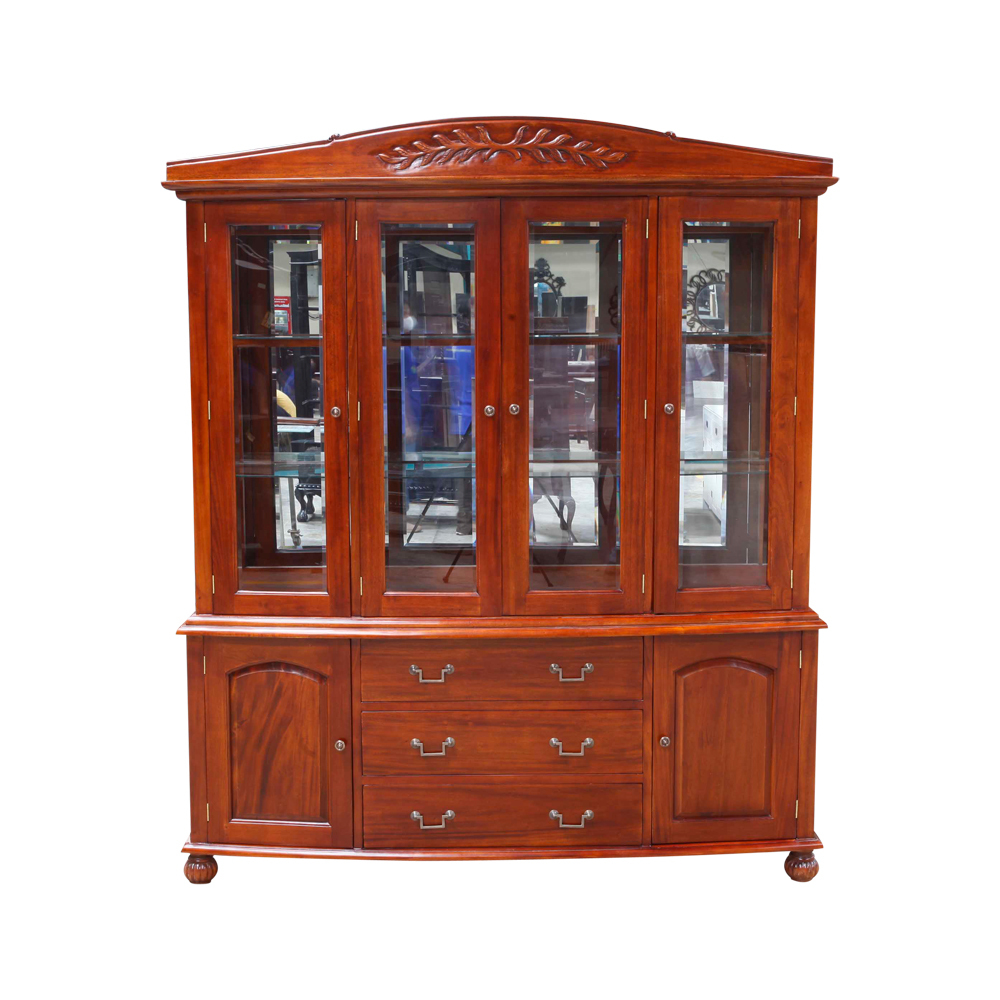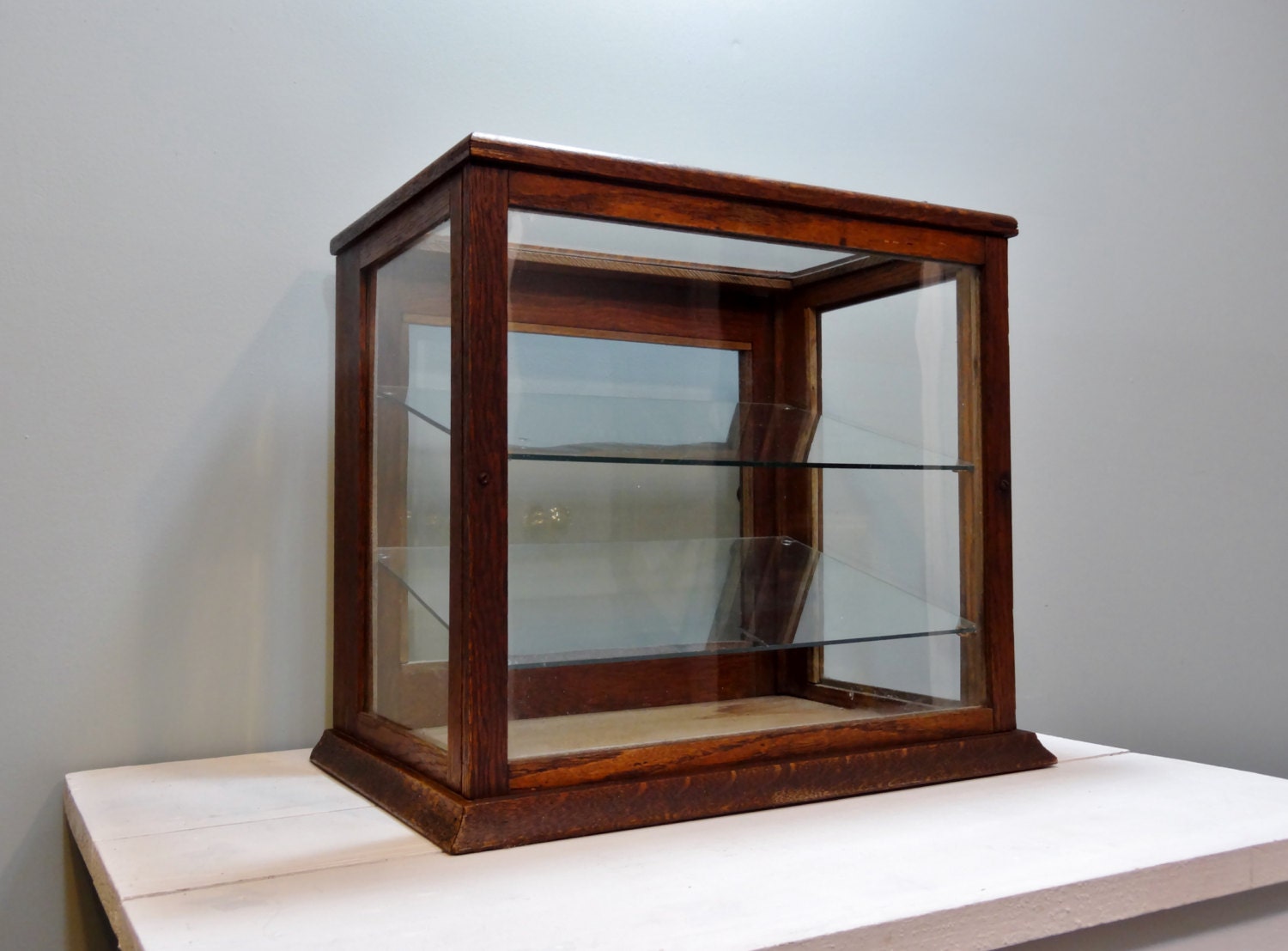The Allure of Antique Glass Display Cabinets
Antique glass display cabinets are more than just furniture; they are windows into the past, reflecting the artistry, craftsmanship, and evolving tastes of bygone eras. These cabinets, often referred to as curio cabinets, showcase the beauty of their contents while also serving as captivating historical artifacts themselves.
Historical Significance and Evolution
The history of glass display cabinets is intricately intertwined with the development of glassmaking and furniture design. Early examples, dating back to the 17th century, were primarily functional, used for storing and displaying precious objects, such as china, silverware, and other valuables. The cabinets were often made of wood with glass panels, allowing for a glimpse of the treasures within.
As glassmaking techniques advanced, particularly during the 18th and 19th centuries, glass display cabinets became more elaborate. The use of lead crystal, with its brilliant clarity and refractive properties, added a new dimension of elegance and sophistication. This period saw the emergence of various styles, influenced by prevailing artistic movements and regional preferences.
Craftsmanship and Materials
Antique glass display cabinets are testaments to the skill and artistry of their makers. The craftsmanship involved in constructing these cabinets is evident in every detail, from the intricate joinery to the delicate glasswork.
- Wood: Antique cabinets were often crafted from high-quality hardwoods such as mahogany, oak, walnut, and cherry, chosen for their durability, beauty, and resistance to warping. The wood was meticulously selected, seasoned, and then carefully shaped and assembled using traditional joinery techniques.
- Glass: The glass used in antique cabinets varied depending on the period and the cabinet’s style. Early examples often featured thick, hand-blown glass panes, while later cabinets might have incorporated thinner, machine-blown glass. The glass could be plain, patterned, or etched, adding to the cabinet’s visual appeal.
- Hardware: Antique glass display cabinets often featured ornate hardware, such as brass or bronze hinges, handles, and locks. These elements not only served a practical purpose but also contributed to the overall aesthetic of the cabinet.
Styles and Periods
Antique glass display cabinets represent a diverse range of styles and periods, each reflecting the unique aesthetic sensibilities of its time.
- Victorian: Victorian-era cabinets are known for their ornate details, elaborate carvings, and dark, rich woods. They often feature stained glass panels, intricate metalwork, and a heavy, imposing presence.
- Art Nouveau: Art Nouveau cabinets, popular in the late 19th and early 20th centuries, are characterized by flowing lines, organic motifs, and a focus on natural forms. They often feature delicate glasswork, stained glass panels, and a lighter, more ethereal feel than their Victorian counterparts.
- Art Deco: Art Deco cabinets, popular in the 1920s and 1930s, are known for their geometric patterns, bold colors, and luxurious materials. They often feature mirrored panels, chrome accents, and a sense of opulence and sophistication.
Displaying Treasures

Antique glass display cabinets, with their intricate craftsmanship and timeless elegance, have served as more than just repositories for precious objects. They are silent storytellers, preserving the history and artistry of bygone eras while simultaneously showcasing the treasures within.
Traditional Uses
Antique glass display cabinets, once commonplace in homes, held a significant place in daily life. They served a practical purpose, protecting valuable possessions from dust, pests, and the elements. These cabinets were often used to display family heirlooms, such as antique china, silverware, and glassware, symbolizing the family’s history and wealth.
Objects Commonly Displayed, Antique glass display cabinet
These cabinets were designed to showcase a variety of objects, each telling a story of its own. Here are some common items that found their place within the glass walls:
- Fine China and Porcelain: Delicate teacups, ornate dinner plates, and intricate figurines, each piece a testament to the artistry of the past.
- Silverware and Cutlery: Gleaming silverware, engraved with family crests or intricate patterns, reflected the elegance of formal dining.
- Glassware: Exquisite crystal glasses, decanters, and vases, showcasing the craftsmanship of glassblowers.
- Antique Books and Manuscripts: Leather-bound books, with gilded edges and intricate illustrations, were treasured for their historical and literary value.
- Collections: Antique glass display cabinets were ideal for showcasing collections, such as stamps, coins, shells, or miniature figurines.
Enhancing a Space
Antique glass display cabinets possess a unique ability to transform a space. Their presence adds a touch of sophistication and history, creating a focal point that draws the eye.
“Antique glass display cabinets are like time capsules, preserving the past while illuminating the present.”
These cabinets, with their intricate details and glass panes, act as elegant frames, showcasing the beauty of the objects within. They invite a sense of wonder and intrigue, encouraging viewers to explore the stories behind each piece.
Preserving the Past: Antique Glass Display Cabinet

Antique glass display cabinets, with their intricate details and timeless elegance, are not merely pieces of furniture; they are vessels of history, whispering tales of bygone eras. Their delicate nature demands careful attention, a commitment to preserving their beauty for generations to come. This section delves into the art of caring for and restoring these treasures, ensuring they continue to enchant and inspire.
Cleaning and Maintenance
Maintaining the pristine condition of an antique glass display cabinet requires a gentle touch and a mindful approach. Regular cleaning is crucial to prevent dust accumulation and preserve the glass’s brilliance.
- Dusting regularly with a soft, microfiber cloth is essential. Avoid abrasive materials that can scratch the delicate glass surfaces.
- For deeper cleaning, a mixture of mild dish soap and warm water can be used. Apply the solution with a soft cloth, avoiding harsh scrubbing. Rinse thoroughly and dry with a clean, lint-free cloth.
- Avoid using harsh chemicals, cleaners containing ammonia, or abrasive cleaners, as these can damage the glass or the cabinet’s finish.
- For wooden frames, a gentle polish can be used to restore shine and protect the wood. Always test the polish on an inconspicuous area first to ensure compatibility.
Addressing Common Damage
Over time, antique glass display cabinets may exhibit signs of wear and tear. Recognizing and addressing these issues promptly can prevent further deterioration and preserve the cabinet’s integrity.
- Cracks or chips in the glass can be stabilized with a specialized glass adhesive. However, for extensive damage, professional restoration is recommended.
- Loose hinges or handles can be tightened or replaced with period-appropriate replacements. A qualified antique furniture restorer can assist with this process.
- Woodwork can be repaired with wood filler or by replacing damaged sections. It’s essential to use materials that match the original wood and finish.
Restoring Antique Glass Display Cabinets
Restoring an antique glass display cabinet to its former glory is a labor of love that requires patience, skill, and an understanding of the cabinet’s history.
- The first step is a thorough assessment of the cabinet’s condition. This includes identifying any damage, wear, or missing components.
- Cleaning and preparing the cabinet for restoration is crucial. This involves removing dust, grime, and any loose finishes.
- Restoring the glass involves carefully cleaning it, addressing any cracks or chips, and potentially replacing damaged panes with period-appropriate replacements.
- Refinishing the wood involves stripping the old finish, repairing any damage, and applying a new finish that complements the cabinet’s original style. This may involve sanding, staining, and applying multiple coats of varnish.
- Replacing missing hardware, such as hinges, handles, and locks, with period-appropriate replacements can enhance the cabinet’s authenticity and restore its functionality.
“Restoring an antique glass display cabinet is a journey of rediscovery, revealing the stories etched within its intricate details and breathing new life into a piece of history.”
Antique glass display cabinets are a beautiful way to showcase your prized possessions. Their intricate details and elegant design can add a touch of vintage charm to any room. Finding the perfect cabinet can be a challenge, especially if you’re on a budget.
Luckily, there are resources available to help you find cheap 2 bedroom apartments in Orange County , freeing up some of your budget to invest in a stunning antique glass display cabinet for your home.
Antique glass display cabinets are a beautiful way to showcase cherished possessions, adding a touch of elegance to any room. Imagine displaying your family heirlooms within such a cabinet, perhaps alongside souvenirs from a memorable vacation, like a cruise aboard the Norwegian Jade 2 bedroom family suite.
The warm glow of the glass and the intricate details of the cabinet would perfectly complement the memories held within, creating a captivating display that tells a story.
